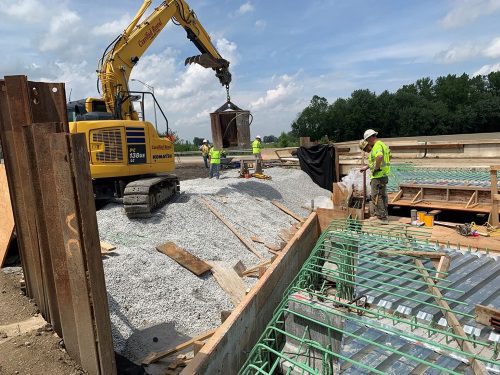Purdue Researchers Seek to Create Smart Concrete

Researchers at Purdue University are working to create “intelligent concrete” that would help cut down on road repairs and traffic delays; an effort based on information gleaned from a pilot project conducted jointly with the Indiana Department of Transportation.
[Above photo by the Indiana DOT.]
Lana Lu, an associate professor at the university’s Lyles School of Civil Engineering, and a team of researchers worked with the Indiana DOT in 2019 to embed sensors into three Indiana highways to recommend the best time to open up traffic after patching work or new pavement construction, continuously tracking concrete development.

Now her team is taking that data and developing ways concrete roadways could repair themselves – investigating different types of highly porous, sand-like materials called “internal curing agents” to mix into concrete. When concrete cracks, Lu said, the curing agents absorb water and feed it into chemical reactions. Those reactions then produce solid substances that seal off the crack, “healing” the concrete.
That healing process also prevents water from seeping into the concrete and corroding steel or rebar reinforcement: a particularly useful characteristic in alleviating damage caused by harsh winters.

Lu said that during winter months, roads can experience cracking from freeze and thaw cycles. When temperatures drop below 32 degrees Fahrenheit, water molecules on a road’s surface freeze and then expand; creating cracks that can then lead to the development of larger fissures over the course of several winter seasons.
“By using these self-healing materials, we can make infrastructure adaptive to temperature change,” noted Lu in an interview with Purdue’s communication team. “We look at how we can address problems in infrastructure using materials and sensors that harness artificial intelligence and big data. The idea is to make infrastructure adaptive, sustainable and resilient.”
Virtual Surveyor Drone Surveying Software Simplifies Workflow for Earthworks Monitoring at Construction Sites
June 15, 2020


